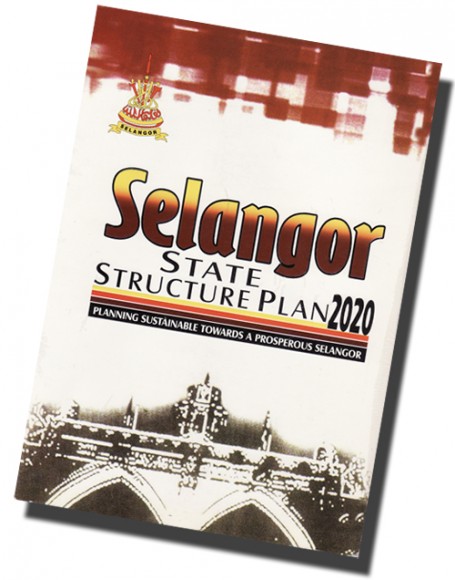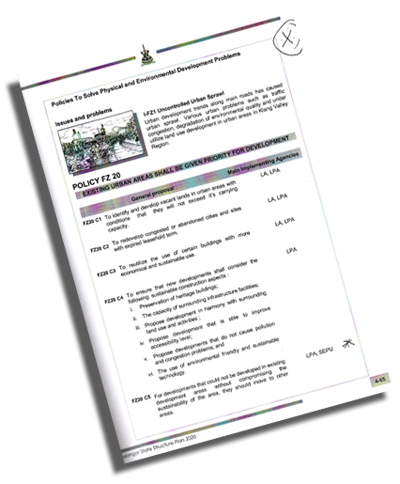WHEN residents talk about development in an urban environment, the discussion primarily focuses on ensuing traffic problems for the existing neighbourhood. Developers would, in turn, talk about how they are bringing in much needed economic activity into the area to justify the project.
Any discussion without a base framework to start from would invariably lead to disagreements, as I have often enough witnessed in objection hearings for development projects. To provide that base framework, I shall present today’s topic – sustainable development.

Defining “sustainable development”
The Town and Country Planning Act (TCPA) has a provision for each state government to prepare a development policy document called a state structure plan. This plan governs how land is used and how development would take place within each state.
In providing the specifics on how to prepare the state structure plan, Section 8(3) of the TCPA states: “The draft structure plan shall be a written statement – for the improvement of the physical living environment, the improvement of communications, the management of traffic, the improvement of socioeconomic well-being and the promotion of economic growth, and the facilitating of sustainable development” (my emphasis).
Following this instruction, the Selangor Town and Country Planning Department came up with the Selangor State Structure Plan (SSP) in 2002 and gazetted the document in 2007. Its role in governing development is clear, as the document states that developers must refer to and comply with the policies within when preparing development proposal reports.
In describing what constitutes sustainable development, the SSP states: “Sustainable development will enable the current generation to satisfy their needs without compromising the needs of future generations.” To achieve this, the SSP prescribes numerous policies for development (economic, social, physical and environmental), a land use strategic plan, and specific instructions on how all these policies shall be implemented.
These policies cannot be ignored either. Section 22(4) of the TCPA clearly states that any application for planning permission shall be rejected if it is found to not comply with any development plan – which is what a state structure plan is.
 Thus, the SSP is an expansive document that defines sustainable development and is also legally binding on the government and developers. This makes it a good reference point for any disputes and arguments residents and developers may have over a particular development proposal.
Thus, the SSP is an expansive document that defines sustainable development and is also legally binding on the government and developers. This makes it a good reference point for any disputes and arguments residents and developers may have over a particular development proposal.
Development policies
The SSP policies are categorised according to issues and how to solve them. Examples of problems for development in an urban area include traffic congestion, waste disposal and open spaces. Let’s focus on the traffic congestion bit since this is a popular and valid issue.
The SSP mentions the uncontrolled urban development along main roads as a problem. Such developments contribute towards traffic congestion and the degradation of environment quality.
Several policies were formulated to help mitigate this issue, among which are as follows:
![]() To identify and develop vacant lands in urban areas with conditions that they will not exceed the land’s carrying capacity.
To identify and develop vacant lands in urban areas with conditions that they will not exceed the land’s carrying capacity.
The carrying capacity is the optimum number of people the facilities in an area can comfortably sustain without causing traffic congestion and taxing utilities such as water supply, electricity supply and sewage treatment.
![]() To propose development that is able to improve accessibility levels.
To propose development that is able to improve accessibility levels.
This means building additional infrastructure to service the new development that only maintains current traffic will not suffice – the infrastructure built must improve the traffic flow.
![]() To ensure that new developments do not cause pollution and congestion problems.
To ensure that new developments do not cause pollution and congestion problems.

In this instance, any new development must not introduce more problems to the existing residents, and this includes noise pollution. Very often, this particular aspect of development is not looked into at all.
The reason these points must be ascertained is because the SSP clearly instructs what to do if a development fails to comply with these policy standards. It says: “For developments that could not be developed in existing development areas without compromising the sustainability of the area, they should move to other areas.”
Structure plan vs local plan
Strictly speaking, a local council should reject development proposal reports that do not reference the SSP, as the instructions are clear: “All local authorities, state and federal government agencies and all interested parties (my emphasis) in Selangor shall comply with SSP Selangor in planning and development.”
However, none of the development proposal reports that I have gone through in the past three years as a councillor carry any sort of reference to the SSP. Neither does the Petaling Jaya City Council inform the residents of this requirement.
The argument that some of my colleagues use is that Petaling Jaya has a local plan, commonly referred to as RTPJ1 (Petaling Jaya Local Plan 1). Since this document is also recognised as a development plan under the TCPA, it is not wrong to follow the RTPJ1’s policies, even if these may be in conflict with what the SSP states.
That argument would go nowhere if the SSP didn’t address this issue clearly. It says, “Where there is a local plan in force, planning and development approvals must be made based on the local plan, provided that the local plan adheres to the SSP Selangor” (my emphasis).
Constructive criticism
This excerpt of the SSP is by no means complete, as there are numerous other policies within it which deal with other social and economic problems that plague Selangor. Nevertheless, it should suffice in providing both residents and developers a common ground to discuss any proposed development in a constructive manner.
Of course, there are finer points in the SSP that need to be complied with that would make most developers cringe for wanting to develop in an urban area. That is a topic for another time. ![]()
MBPJ councillor KW Mak believes that the best way of upholding the public’s rights is to educate the people so they can uphold it themselves. In that regard, he believes Seksualiti Merdeka to be doing no different and would like to voice his support – small as it may be – to the organisers.

